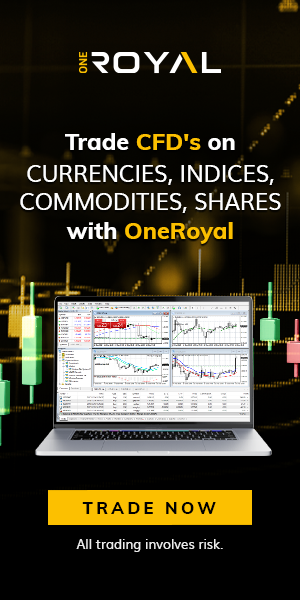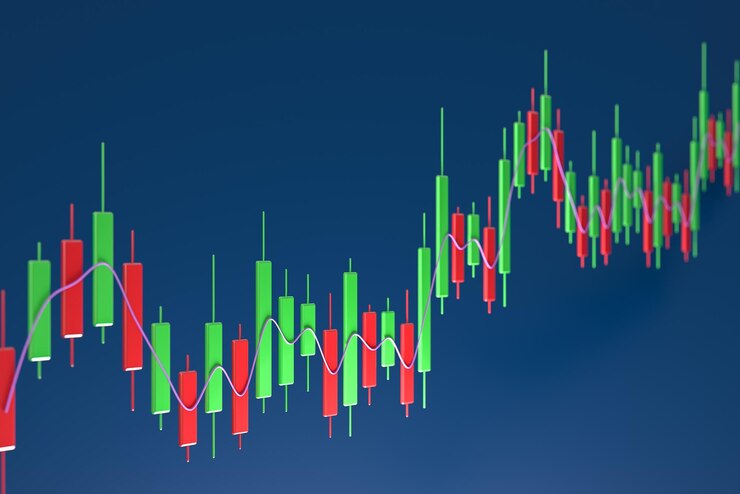Volatility ratio analysis is a powerful tool used in financial markets to measure the degree of price fluctuation over a specific period.
For traders, understanding volatility is key to making informed decisions, as it can signal potential market movements, risk levels, and opportunities for profit.
Volatility ratio analysis is the study of price fluctuations relative to historical price movements. The volatility ratio is a comparison between the current volatility and the average volatility over a predefined period.
This ratio provides traders with insights into whether the current market is experiencing increased or decreased volatility compared to its historical norms.
In This Post
How to Calculate the Volatility Ratio
To calculate the volatility ratio, traders typically use the following steps:
Determine Historical Volatility: Measure the historical volatility of a security or currency over a given period. This can be done using standard deviation or average true range (ATR).
Measure Current Volatility: Calculate the volatility over a shorter period (e.g., daily volatility or weekly volatility).
Divide Current by Historical: Divide the current volatility by the historical volatility to get the volatility ratio.
Interpretation of the Volatility Ratio
Ratio > 1: Indicates that the current volatility is higher than the historical average. This suggests a more volatile market, often signalling potential breakouts or significant price moves.
Ratio < 1: Indicates that current volatility is lower than the historical average, implying a more stable market. This might suggest the market is consolidating or in a low-volatility phase before a potential breakout.
Application in Forex and Stock Trading
1. Forex Trading
In the Forex market, volatility ratio analysis can be used to assess currency pairs and determine when the market is likely to experience strong price movements.
For example, if the volatility ratio indicates a sharp rise in volatility, traders might prepare for sudden price swings or increased trading opportunities.
2. Stock Trading
For stock traders, volatility ratio analysis can help in identifying stocks that are breaking out of a low-volatility phase.
This is particularly useful in day trading or swing trading, where price movements need to be closely monitored.
A rising volatility ratio may suggest that a stock is moving away from its consolidation zone and could experience a significant trend.
Benefits of Volatility Ratio Analysis
1. Helps Identify Market Phases
The volatility ratio is an excellent tool for identifying the current phase of the market. Traders can determine whether the market is experiencing high volatility (suggesting strong trends or breakouts) or low volatility (implying consolidation or sideways movement).
2. Better Timing for Entries and Exits
By observing shifts in the volatility ratio, traders can time their entries and exits more accurately. A sudden increase in the ratio might signal a good opportunity to enter or exit a trade before the price makes a significant move.
3. Informs Risk Management
Understanding volatility is crucial for managing risk. In highly volatile markets, traders can adjust their position sizes or use tighter stop-loss orders. Conversely, in low-volatility markets, they may choose wider stops to account for smaller price fluctuations.
Limitations of Volatility Ratio Analysis
1. Delayed Signals
One limitation of volatility ratio analysis is that it often provides delayed signals. Since the ratio is calculated using historical data, there may be a lag between when volatility shifts and when the ratio reflects that change. This can make it harder to react immediately to market changes.
2. Less Effective in Choppy Markets
In highly erratic or choppy markets, volatility ratio analysis may produce unreliable signals. Sharp but temporary price movements can skew the ratio, leading to false indications of rising or falling volatility.
Trading Strategies Using Volatility Ratio Analysis
1. Breakout Trading
Traders can use the volatility ratio to identify breakouts from consolidation zones. A rising ratio often suggests that the market is gearing up for a significant move, making it an ideal time to place breakout trades. Pair this with support and resistance levels for more precision.
2. Trend Following
When the volatility ratio indicates rising volatility in a trending market, it often signals a strong continuation of the trend. Traders can use this information to enter trend-following trades, capitalizing on sustained momentum.
3. Mean Reversion
In periods of extremely high volatility, traders can use the volatility ratio to predict potential reversals. If the ratio indicates that volatility is abnormally high, it could suggest that the market is overextended and due for a correction. This is a common strategy in Forex and stock markets, where assets tend to revert to their mean price over time.
Differences Between Volatility Ratios and Other Volatility Indicators
1. Volatility Ratio vs. ATR (Average True Range)
While both the volatility ratio and ATR measure volatility, they do so in different ways. The ATR provides an absolute measure of volatility by calculating the average range of price movement over a period.
In contrast, the volatility ratio compares current volatility to historical volatility, providing a relative measure. The volatility ratio is more useful for identifying changes in volatility over time.
2. Volatility Ratio vs. Bollinger Bands
Bollinger Bands also measure volatility, but they do so by plotting standard deviations around a moving average. Bollinger Bands help traders visualize the expansion and contraction of volatility, while the volatility ratio offers a numerical comparison of current and past volatility levels.
3. Volatility Ratio vs. Implied Volatility
Implied volatility (IV) is often used in options trading and reflects the market’s expectation of future price movements. In contrast, the volatility ratio looks at historical and current price fluctuations.
Traders might use implied volatility to predict future market behaviour, while the volatility ratio helps them understand the present volatility context.
Accuracy of Volatility Ratio in Market Analysis
The volatility ratio is a reliable indicator for gauging market conditions, especially when used alongside other technical tools.
However, like all indicators, it is not 100% accurate. Market conditions, macroeconomic events, or sudden changes in sentiment can disrupt the signals provided by the volatility ratio. Therefore, it’s recommended to use it as part of a broader analysis toolkit.
Types of Volatility Ratio Analysis
Volatility ratio analysis can be applied in various ways, depending on the asset class, timeframe, or trading style. Here are the most common types:
1. Historical Volatility Ratio
This is the most commonly used type, where traders compare current volatility to historical volatility over a set period. The goal is to determine whether the market is more or less volatile compared to its past performance.
Long-Term Volatility Ratio: Applied to longer timeframes, typically weeks or months, making it useful for swing traders or
Short-Term Volatility Ra investors looking for larger market movements.
2. Directional Volatility Ratio
This type focuses on the direction of volatility rather than its magnitude. Traders measure the volatility of uptrends versus downtrends to understand whether buyers or sellers dominate the market.
Bullish Volatility Ratio: Measures volatility during uptrends, useful for identifying the strength of a bullish market.
Bearish Volatility Ratio: Measures volatility during downtrends, helping traders assess the intensity of bearish market moves.
3. Relative Volatility Ratio
In this approach, traders compare the volatility of one asset or currency pair against another. This is particularly useful in Forex trading when deciding which currency pair offers better trading opportunities based on relative volatility levels.
4. Implied Volatility Ratio
Though more common in options trading, the implied volatility ratio compares current market expectations of future volatility to historical volatility. It helps traders gauge the market sentiment regarding future price movements.
What Does Volatility Ratio Analysis Signify?
Volatility ratio analysis is a key indicator of market sentiment, risk levels, and potential trading opportunities. Here’s what it signifies:
1. Market Risk
Volatility ratio analysis helps traders assess the risk in a market. A higher volatility ratio means increased price fluctuations, indicating a riskier environment. This can suggest that significant market events, news releases, or economic data might cause sharp price movements.
2. Potential Breakouts
A rising volatility ratio often signals that the market may break out of a consolidation phase. When the ratio climbs above its historical average, it can indicate that a significant price move is imminent, making it a valuable tool for breakout traders.
3. Trend Strength
A higher volatility ratio can signify that a current trend is gaining momentum, while a lower ratio might suggest weakening momentum. This makes volatility ratio analysis a useful addition to trend-following strategies, helping traders determine whether to stay in or exit a trade.
4. Market Sentiment
Volatility ratios are often correlated with market sentiment. A higher ratio may suggest fear or uncertainty in the market, as traders react to significant events or anticipate future movements. Conversely, a lower ratio might indicate complacency or a lack of interest, leading to lower trading volumes.
Frequently Asked Questions
1. How does the volatility ratio differ from implied volatility?
While the volatility ratio compares current to historical volatility, implied volatility predicts future price fluctuations based on market expectations, especially in options trading.
2. Can volatility ratio analysis be used for long-term trades?
Yes, the volatility ratio is flexible and can be applied to both short-term and long-term trading strategies, depending on the timeframe used.
3. What other indicators pair well with volatility ratio analysis?
Indicators like the Relative Strength Index (RSI), Bollinger Bands, and the Average True Range (ATR) complement volatility ratio analysis by providing additional confirmation of trends and price movements.
Conclusion
Volatility ratio analysis offers traders a valuable method for understanding market behavior and potential price movements.
Whether you’re trading Forex, stocks, or commodities, knowing when volatility is rising or falling can be the difference between a profitable trade and a losing one.
However, like any tool, it should not be used in isolation. Pairing it with other technical indicators and a solid risk management strategy will enhance your trading decisions and overall performance.
Major Takeaways
Volatility ratio analysis measures the current market volatility relative to historical volatility, providing traders with insights into potential price movements.
It is highly adaptable, working across different markets, including Forex and stocks.
Benefits include better risk management, improved timing for entries and exits, and the ability to identify market phases.
The indicator has limitations, such as delayed signals and less effectiveness in choppy markets.
Combining volatility ratio analysis with other tools like ATR, Bollinger Bands, and trend indicators can improve trading accuracy and reduce false signals.




